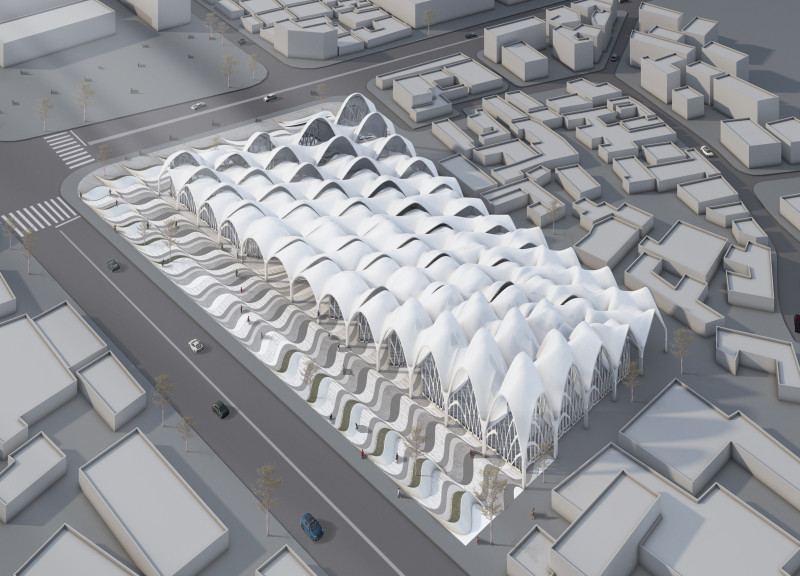5 key facts about this project
At its core, this architectural project serves [describe the primary function of the project, such as residential, commercial, cultural, etc.], designed to foster [mention any experiences or interactions it encourages, like community engagement, work-life balance, etc.]. The layout and structure have been crafted to enhance usability while promoting a fluid interaction between indoor and outdoor spaces. The overall design philosophy underscores a desire to create environments that are not merely functional but also uplifting in character, enhancing the daily lives of those who inhabit them.
The design employs a material palette that speaks to both durability and aesthetic appeal. Elements such as concrete provide a robust foundation, while expansive glass facades invite natural light, reducing the need for artificial illumination during daylight hours. These large windows serve not only practical purposes but also enhance visual connectivity between the interiors and the natural landscape, fostering a sense of harmony with the environment. Furthermore, the integration of wood throughout the space introduces warmth, creating an inviting atmosphere, while steel accents contribute to the structural integrity and modernity of the design. Each material has been chosen with care, contributing both to the project’s architectural narrative and its environmental performance.
Key parts of the project include [describe important areas, such as communal spaces, private areas, outdoor terraces, etc.], which are meticulously arranged to define specific zones of activity while allowing for natural movement throughout the space. For instance, the open-plan layout promotes interaction, encouraging socialization and community building among users. The thoughtful incorporation of flexible spaces allows for adaptability, catering to diverse needs that may arise over time, enhancing the longevity of the architectural investment.
Unique design approaches have been employed throughout the project, illustrating innovative ideas that push the boundaries of conventional architecture. The integration of [insert any distinctive features, such as green roofs, rainwater harvesting systems, or energy-efficient technologies] clearly indicates a forward-thinking methodology that prioritizes environmental stewardship. These features not only contribute to the sustainability of the building but also align with the broader goals of reducing carbon footprints and encouraging responsible living.
Additionally, the project’s orientation has been strategically considered to maximize passive heating and cooling, minimizing reliance on artificial climate control. This approach not only improves energy efficiency but also enhances the overall comfort of the occupants. The careful positioning of outdoor areas provides shaded retreats during hot days and sunlit spaces for leisure, promoting well-being and connection to nature.
This architectural endeavor embodies a comprehensive understanding of both human needs and environmental considerations, making it a significant contribution to contemporary discourse in architecture. It serves as a model for future projects, demonstrating that thoughtful design can indeed align with sustainability objectives. To gain deeper insights into the intricate details of this project’s architectural plans, sections, and design ideas, readers are encouraged to explore the full presentation. Engaging with these materials will offer further understanding of how such architectural elements come together to create meaningful and functional spaces.























